Greya enchrysa
Olle PellmyrAdult Characteristics
Wing expanse 15.5-20 mm. Forewings in most areas uniformly pale ochreous, often with a golden luster; rarely pale straw-colored. In the eastern portion of the range, some populations with ochreous to dark ochreous color, a light subtornal patch and sometimes a slight costal patch near the apex. Hindwings darker, gray.
Comparison with Similar Species
This yellow, uniformly colored species should be unmistakable. It often coexists with the yellow but spotted G. piperella and the uniformly colored, darker brownish G. politella.
Host, Oviposition, and Larval Feeding Habits
Heuchera cylindrica and H. grossulariifolia (Saxifragaceae). Females oviposit into the floral ovary of the host, and several larvae per capsule complete the first one or two larval instars feeding on seeds. Subsequent biology is unknown.

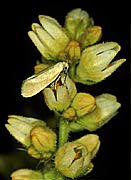
Greya enchrysa ovipositing into the ovary of a H.cylindrica flower.
Geographic Distribution
In the drier interior regions of southern British Columbia and Alberta, Canada, and in interior Washington and Oregon, Idaho and western Montana, USA.
Habitat
In open, grassy pine forest or near rockfaces in open country where the host is found growing in crevices and ledges. Elevational range 250-1500 m. It often coexists with G. piperella and G. politella.

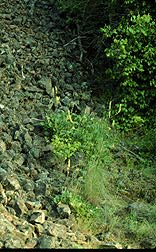
Characteristic habitat in Nez Perce Co., Idaho; Heuchera grows along lower edge of talus.
Ecological Notes
Greya enchrysa is an efficient passive pollinator during oviposition, transporting ample pollen of its host on the abdomen between flowers. Larvae consume relatively few seeds, and the species could thus be a mutualist relative to the host. An abundance of other pollinators, particularly bumblebees, mask the beneficial effects of the moth on seed production in studied populations (Pellmyr et al. 1996).
Further ecological aspects of G. enchrysa and the species that it interacts with are currently under study by and at Washington State University.
References
Davis, D.R., O. Pellmyr & J.N. Thompson. 1992. Biology and systematics of Greya Busck and Tetragma n. gen. (Lepidoptera: Prodoxidae). Smiths. Contrib. Zool. 524:1-88.
Pellmyr, O., J.N. Thompson, J. Brown & R.G. Harrison. 1996. Evolution of pollination and mutualism in the yucca moth lineage. Amer. Nat. 148:827-847.
Title Illustrations

| Scientific Name | Greya enchrysa |
|---|---|
| Location | Asotin Co., Washington, USA |
| Specimen Condition | Dead Specimen |
| Sex | Male |
| Image Use |
 This media file is licensed under the Creative Commons Attribution-NonCommercial License - Version 3.0. This media file is licensed under the Creative Commons Attribution-NonCommercial License - Version 3.0.
|
| Copyright |
© 1996

|
| Scientific Name | Greya enchrysa |
|---|---|
| Location | Wallowa Co., Oregon, USA |
| Specimen Condition | Dead Specimen |
| Sex | Female |
| Image Use |
 This media file is licensed under the Creative Commons Attribution-NonCommercial License - Version 3.0. This media file is licensed under the Creative Commons Attribution-NonCommercial License - Version 3.0.
|
| Copyright |
© 1996

|
About This Page

University of Idaho, Moscow, Idaho, USA
Page copyright © 1996
 Page: Tree of Life
Greya enchrysa .
Authored by
Olle Pellmyr.
The TEXT of this page is licensed under the
Creative Commons Attribution-NonCommercial License - Version 3.0. Note that images and other media
featured on this page are each governed by their own license, and they may or may not be available
for reuse. Click on an image or a media link to access the media data window, which provides the
relevant licensing information. For the general terms and conditions of ToL material reuse and
redistribution, please see the Tree of Life Copyright
Policies.
Page: Tree of Life
Greya enchrysa .
Authored by
Olle Pellmyr.
The TEXT of this page is licensed under the
Creative Commons Attribution-NonCommercial License - Version 3.0. Note that images and other media
featured on this page are each governed by their own license, and they may or may not be available
for reuse. Click on an image or a media link to access the media data window, which provides the
relevant licensing information. For the general terms and conditions of ToL material reuse and
redistribution, please see the Tree of Life Copyright
Policies.
Citing this page:
Pellmyr, Olle. 1996. Greya enchrysa . Version 01 January 1996 (under construction). http://tolweb.org/Greya_enchrysa/12312/1996.01.01 in The Tree of Life Web Project, http://tolweb.org/




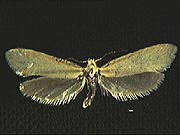
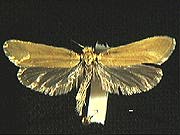
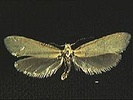



 Go to quick links
Go to quick search
Go to navigation for this section of the ToL site
Go to detailed links for the ToL site
Go to quick links
Go to quick search
Go to navigation for this section of the ToL site
Go to detailed links for the ToL site